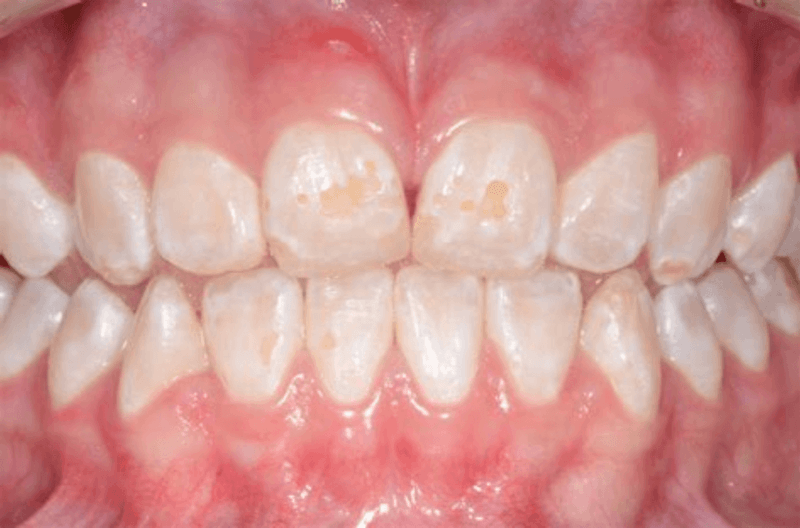What is dental enamel hypoplasia?
Dental hypoplasia is a defect in the development of the enamel (first visible layer of the tooth) that manifests as a decrease in its thickness and structure. It can affect both primary (“baby”) and permanent (“adult”) teeth, and is usually the result of genetic, systemic or environmental factors that alter the formation of enamel during amelogenesis (the process of tooth enamel formation during tooth development).
Causes of dental hypoplasia
- Genetic factors:
- Amelogenesis imperfecta (incorrect formation of tooth enamel during tooth development due to mutations in genes that regulate tooth enamel).
- Genetic syndromes such as Treacher Collins or Turner syndrome.
- Systemic factors:
- Childhood illnesses (measles, chickenpox, malnutrition)
- Nutritional deficiencies (calcium deficiency, vitamin D, vitamin A)
- Metabolic disorders such as hypoparathyroidism
- Environmental factors:
- Maternal infections during pregnancy
- Exposure to toxins (severe fluorosis, tetracyclines)
- Periapical trauma or infection of primary teeth affecting permanent successors
Clinical manifestations
- Depressions, grooves or areas with partial loss of enamel.
- Abnormal coloration (white, yellowish or brownish).
- Increased susceptibility to caries.
- Increased tooth sensitivity.
- In severe cases, alterations in the shape of the tooth.
Treatment
The approach depends on the severity of the defect:
- Mild cases: Sealants, fluoridation and remineralization with CPP-ACP.
- Moderate cases: Composite resins to restore anatomy.
- Severe cases: Composite or ceramic crowns, and in extreme cases, prosthetic rehabilitation.
Early detection is key to prevent complications and improve the esthetics and functionality of affected teeth.


